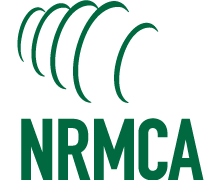
| Archive | nrmca.org | E-Store | Conferences & Events | Certifications | InFocus | Membership Directory |
Long-term Life-Cycle Costs Prompt Nevada to Choose Concrete for Bypass Project Citing long-term life-cycle costs, officials at Nevada Dept. of Transportation have awarded the first phase of the planned Boulder City Bypass to a contractor that proposed paving the highway section with concrete, despite this proposal costing $3 million more than the lowest bid, which planned to use asphalt.
"We opted to use concrete pavement due to its longevity, which federally funded studies show costs 13% to 28% less in the long run than asphalt," says Mary Martini, NDOT District 1 engineer. "It also reduces rutting and potholes, thereby cutting maintenance expenses by up to 75%."
Budgetary pressures have inspired more states to ask contractors to analyze life-cycle costs in bids. "The mechanism has been around a long time, but not everyone has taken advantage of it," says Tony Illia, NDOT spokesman. At a price tag of roughly $318 million for 15 miles of new road construction, the Boulder City Bypass along Interstate 11 would ensure the southeastern approach to Las Vegas from Hoover Dam will be at federal highway standards.
Phase one of the project is approximately 2.5 miles and includes improvements to what is now U.S. Highway 93 in Boulder City. The 2.5-mile-long project calls for building a four-lane freeway between Silverline Road and Foothill Drive, as well as a full diamond interchange at Railroad Pass with a loop ramp. The corridor currently sees 34,000 vehicles daily with heavy truck traffic. Other components of phase one, expected to break ground April 6 and finish early 2018, include creating a 1.5-mile-long asphalt frontage road linking Henderson with the Railroad Pass interchange, replanting 20,000 cactuses, placing decorative rock and installing 5 miles of tortoise fencing. There will also be a 1,200-ft-long, 28-ft-tall cast-in-place concrete retaining wall with graphics illustrating scenes from the construction of Hoover Dam. It will act as the corridor's main visual element. The textured, multicolored retaining wall will be coated with a special anti-graffiti film that serves as a deterrent for taggers.
Source: A February 18 article by Engineering News-Record. Read more.
|
|
|








